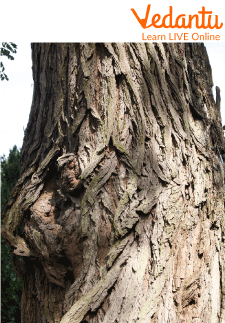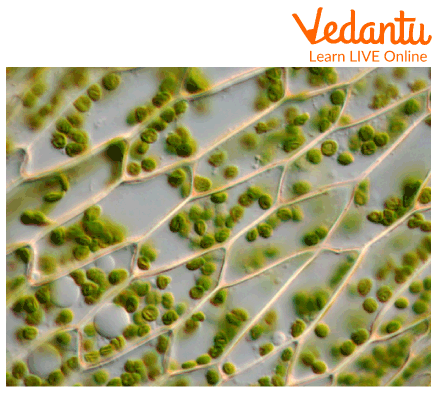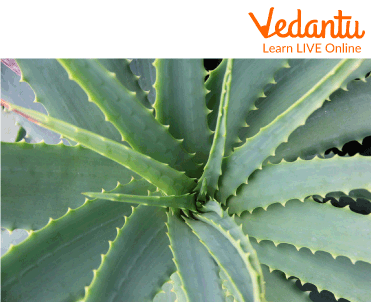




Introduction to Defense Mechanisms of Plants
Plants have their defence system, but they can neither speak nor walk, so how do they protect themselves? The strong layer on the branches, stems and roots of trees is called bark. The bark also has many functions, such as resistance to insects also keeping the plant safe from fire.
Some special tree plants have special protection system, such as the long thorns or many plants that are poisonous.
So this is how trees and plants protect themselves. We should also be aware of all these things because some plants can be fatal. But why do they need protection, and from whom? Let's read this below.

Bark of a Tree
Why Do Plants Need Protection?
Plants defend themselves widely depending on location, growing conditions, and the predators by which the plant may be attacked. In most cases, plant protection is essential to avoid damage and ensure that the plant can reproduce.
Animals commonly eat plants. This is the main reason why plants need protection. Because of this plants develop physical structures that make it difficult for animals to consume the plant – such as thorns.
While larger animals can be stunted by the presence of thorns or large spikes along the length of plant stems and leaves, other plants may require more specialised structures. Plants eaten by irritating insects or insects may require modification of leaf growth structures.
Types of Defences in Plants
There are two types of defences that help plants to protect themselves. These types are:
Constitutive Defense
Induced Defense
Constitutive Defense: In this type of defence, plants have power in themselves only. It is attached to plants and used whenever they are in danger. Most plants use these techniques to protect themselves. For example, when the plants have thorns or chemical poisons thus preventing the animals from eating them.
Induced Defense: In this type of defence, the plant's surroundings help and protect them whenever they are needed. But this is not that helpful. For example, some plants camouflage with their surroundings and thus go unnoticed by their predators.
Chemicals in Plants
Plants can use their chemicals to defend themselves. They produce chemicals that act as poison for others. These chemicals are very poisonous and can also kill anyone. When they get alert and know someone is attacking them, they can release this dangerous chemical at that moment only and can protect themselves. Some examples of chemicals secreted by the plants are: caffeine, nicotine, cardiac glycosides and etc.
Protecting Structures of Plants
Cell Walls and Cuticles are the protecting structures of plants that help them to protect themselves. These functions are:
Like humans, plants also have cell walls that protect themselves such as from bacteria.

Plant Cell Wall Structure
A cuticle is an outer layer which covers the plants and protects them. It is a hard layer so that it can protect them whenever they are in danger.
It covers every outer part of the plants, such as flowers, fruits, leaves, stems etc., that need to be protected from external danger like animals(that want them to harm them).
Interesting Facts About Plant Defences
To keep themselves protected from bacteria, they have rigid cell walls.
They also have many things, like bark and thorns, that can protect them from small insects to large mammals.
Aloe vera and cactus have thorns to protect them from being eaten by anyone.

Thorns in Aloe Vera
Many gardeners use chemicals to protect their plants from small insects.
Some plants produce chemicals to protect themselves.
Some plants are very poisonous. If we touch them or anyhow eat them, they can kill us. The poison can get into our bodies by just touching them. So be careful.
Solved Questions
Multiple Choice Questions (MCQs)
1. What is cuticle in plants?
a. Soft Inner Layer
b. Soft Outer Layer
c. Hard Inner Layer
d. Hard Outer Layer
Ans: Option (d) is correct.
2. Which is a type of plant defence?
a. Missile Defense
b. Constitutive Defense
c. Induced Defense
d. Both b and c
Ans: Option (d) is correct.
3. Which does not help plants to protect themselves?
a. Barks and Thorns.
b. Cell walls and Cuticle.
c. Perfume.
d. Chemicals.
Ans: Option(c) is correct.
Learning By Doing
Write True or False.
1. Plants don't have cell walls.
2. Plants have an outer layer called a cuticle.
3. which defends them.
4. Plants can produce defence chemicals to protect themselves.
5. Rose plants don't have thorns to protect themselves.
Summary
As we know, we have read many things related to plant defences. There are many things that we learn about plants and know how they protect themselves.
Like us, they also need protection when they are in danger. For that, there are many ways in which they can protect themselves. Many parts of plants are attached to them for their protection, such as bark and thorns. That we had already studied in this chapter.
FAQs on How Do Plants Protect Themselves?
1. What are the main ways plants protect themselves from being eaten by animals?
Plants have developed several clever methods to protect themselves from being eaten by animals, known as herbivores. These defenses are generally categorised into two types: physical defenses, which are structural barriers, and chemical defenses, which involve producing substances that are harmful or unpleasant to animals.
2. What are some examples of physical defenses in plants?
Many plants use their physical structure to make it difficult for animals to eat them. Common examples of these defenses include:
- Thorns, Spines, and Prickles: Roses use sharp thorns, and cacti have spines, which are modified leaves, to poke and injure any animal that tries to take a bite.
- Tough Bark and Leaves: Trees possess thick, woody bark that is hard for insects and larger animals to penetrate. Similarly, some plants have tough, leathery, or waxy leaves that are difficult to chew.
- Trichomes: These are tiny, sharp hairs on a plant's surface that can irritate an animal's mouth or skin, like those found on a stinging nettle.
3. How do chemicals help plants defend themselves?
Some plants produce special chemicals that serve as a defense mechanism. These chemicals can make the plant taste bitter or unpleasant, discouraging animals from eating them. For instance, the leaves of a coffee plant are bitter. In other cases, these chemicals can be poisonous or cause illness. The milkweed plant, for example, is toxic to most animals that try to eat it, which teaches them to avoid it in the future.
4. What is the difference between a plant's permanent and temporary defenses?
A plant's defenses can be either always present or created only when an attack occurs.
- Permanent (Constitutive) Defenses: These are 'built-in' defenses that are always active, regardless of any threat. Examples include a cactus's spines or the thick bark on a tree. They provide constant, round-the-clock protection.
- Temporary (Induced) Defenses: These are defenses that the plant produces specifically in response to an attack. For example, when an insect starts chewing a leaf, the plant might start producing a bad-tasting chemical in its leaves. This helps the plant save energy when it is not in danger.
5. Why don't all plants just grow thorns to protect themselves?
Growing defenses like thorns requires a significant amount of energy and nutrients for a plant. For some plants, it is a better survival strategy to use that energy for other purposes, such as growing taller to reach more sunlight, developing deeper roots for water, or producing more seeds for reproduction. Plants adapt the most efficient defense strategy for their specific environment. If a plant lives in a place with few grazing animals, thorns might be an unnecessary waste of its precious energy.
6. Besides animals, what other threats do plants need to protect themselves from?
Plants face threats beyond just being eaten by animals. They have developed defenses against a variety of environmental challenges:
- Diseases and Pathogens: Plants can fight off infections from bacteria and fungi by producing antimicrobial chemicals or by sealing off the infected part of the plant to prevent the disease from spreading.
- Harsh Weather: A waxy coating (cuticle) on leaves helps prevent water loss in hot and dry conditions. Strong, flexible stems help them withstand wind without breaking.
- Other Plants: Some plants engage in a form of chemical warfare called allelopathy, where they release chemicals into the soil to stop competing plants from growing too close.
7. How does a plant 'know' it is being attacked to start defending itself?
Plants do not have a nervous system or brain, but they can sense damage through a complex system of chemical and electrical signals. When a part of the plant, like a leaf, is chewed by an insect, the damaged cells release specific chemicals. These chemicals act as an alarm, travelling through the plant's tissues to warn other parts. This warning triggers the 'un-attacked' parts to start producing defensive compounds, preparing them before the threat reaches them.





















